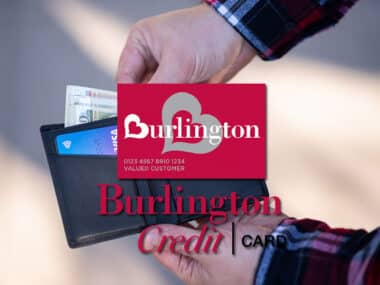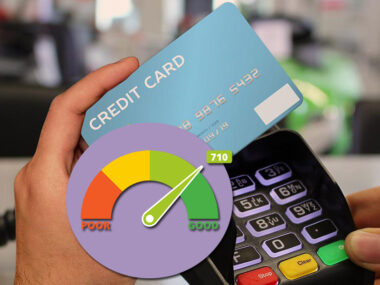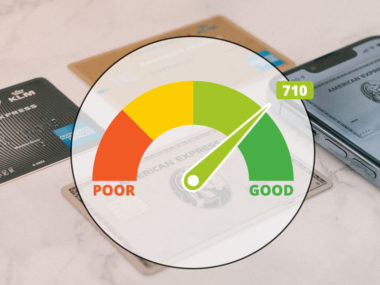Secured credit cards are a great way to build your credit score if you’re working to repair a damaged credit history or build credit for the first time. To get a secured card, you’ll need at least $200 for the security deposit. There are a few things to keep in mind; for example, significant differences to your score could take a while depending on the credit history you’re working with. We cover it all below.
Table of Contents
What Is a Secured Credit Card?
A secured credit card is a type of credit card that requires a down payment equal to the amount of your credit limit. This could be $200 or more depending on the options with your lender. The purpose of the initial deposit is to lower the risk to the lender. It also reduces your risk of overspending and building a mountain of debt, collecting monthly interest. If you fail to make a payment on time, the card issuer will simply take your deposit.
For many, secured cards offer a great way to get a line of credit and start building up their credit score without taking on any substantial debt through a loan. If you are working with no credit history or a bad credit history, a secured credit card is a great start to rebuilding. Here’s how to maximize your card.
Using Secured Credit Cards To Build Credit
When choosing a card issuer, make sure they report your payment information to the big three credit bureaus, because not all do. If your lender doesn’t report your payment history, you won’t be doing any good for your score.
Look out for associated fees and find a card with no annual fees. Since you are working with little to no credit history, your options may seem like they only offer high interest rates. But as long as you pay off the amount you owe every month, you’ll never have to pay an interest fee. Some options could even offer loyalty programs and rewards like cash back.
To effectively build credit with your secured credit card, make sure you only charge what you can pay off in full every month. As with any line of credit, you should always avoid using 30 percent or more of your total credit limit.
It’s best to use as small a portion of your available limit as possible. Even though the secured card is backed by your deposit, it still looks bad to the credit bureaus and other lenders when you use too much. As a best practice, pay your bill two to three days ahead of your due date in case it takes a few days to process.
Do Secured Credit Cards Build Credit?
A secured credit card alone will not immediately provide a good credit score, but making regular payments on your secured card could help. The benefit of using a secured card is there’s no real risk of damaging your score. While you don’t want to miss any payments, the card issuer will just use your deposit to cover the balance if you do. There will not be a negative report on your credit history if this happens.
Your credit score is made up of a few key factors that the credit bureaus use to determine how likely you are to pay back your loans and credits on time. These are the factors that build your credit score and at which percentage they are considered:
- Payment History (35 percent)
- Amounts Owed (30 percent)
- Length of Credit History (15 percent)
- New Credit (10 percent)
- Credit Mix (10 percent)
While it is important to always pay your secured card on time, payment activity impacts only a portion of your history. However, payment history is a significant portion of your score and the secured card could support other aspects of your score beyond it. Eventually, you will want to graduate up to a normal credit card for the benefits. Only an actual credit card can offer like a true line of credit that doesn’t require a deposit, better interest rates, and reward programs.
Few secured cards will be able to graduate to a normal line of credit so you should look at other card options but consider keeping your secured card open even if you don’t use it. The secured card could increase your total credit limit on your report, which makes it easier for you to avoid using 30 percent or more of your credit limit. Spending 30 percent or more of your total available credit limit can look risky to the credit bureaus and might even bring your score down a few points.
How Much Will a Secured Credit Card Raise My Score?
It largely depends on where you’re starting from. Do you have no credit history because you’ve never had a loan or credit card? Or are you working with damaged credit?
Only about 35 percent of your credit score is based on the payments on your secured card, but payment history is still the single-most important factor on your credit report. When working with a clean credit history, you could see a significant increase on your credit score by using your secured credit card. The exact differences will depend on many factors.
To make a significant impact on your credit score, there are multiple actions you can take right away. You should always make your payments on time no matter what, try raising your available credit limit by putting a larger down payment on your secured card, and you should also check your credit report and correct any errors immediately. Additionally, you will see a greater difference on your score if you can get signed on as an authorized user of someone else’s credit card, such as a parent or spouse.
How Fast Will a Secured Credit Card Raise My Score?
The length of time it takes to raise your score, no matter what recovery actions you’ve taken, is subjective to where you currently stand. For example, if you’ve missed payments in the past, each of those could remain on your report for up to eighteen months.
If you’re working with little to no credit history at all, you could see changes to your score as soon as six months after opening your secured card. It always takes a few months of consistent payments for lenders to report information to the credit bureaus, so be diligent about your payments.
Responsibly using a secured credit card has a major impact on your FICO score and it’s a great option for those working to rebuild damaged credit or who can’t get approved for a traditional credit card.
Image Source: https://depositphotos.com/





